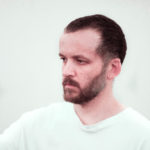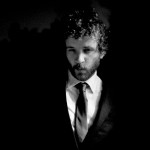english reviews
"FROM END PIN TO PEG Altered grey, for cello and tape, evolved from the development of an anterior work called grey matters, from which it retains the same playing techniques as well as many electroacoustics elements. The result of a close collaboration between performer and composer, altered grey opens to whoever plays it a vast space of freedom, mirroring Émilie Girard-Charest’s approaches as an improviser and composer. Only the regions of the instrument to be explored in the course of the work are determined, pin, peg, fingerboard, with or without the bow, while the playing on the strings intervenes only at the very end of the process, and without any specific pitch. This concrete approach to the instruments, also found in the music of Helmut Lachenmann which was heard in that same recital, aims to liberate the instruments from bearings accumulated through centuries of repertory. One seeks to rediscover, through playing techniques that leave ample room to intuition, the initial wonderment, the primitive fascination for the created sound, where, to cite the visionary Hector Berlioz, every sounding body musically moulded by the composer is a musical instrument. If this attitude, which one can term concrete, originates from the desire to hear sounds for themselves, distanced from their obvious structural significance, the path that Fredrik Gran has taken stems from a will to synthesize, in which fixed sounds find their correspondence in the cello playing: the human voice and the cello sounds transformed to the point of becoming heavy motives with deep frequencies, the mute percussion and the residual sounds of a vinyl disc stuck in its groove, as well as waves of white sound which constitute the electroacoustic framework of altered grey are here quoted by the instrument, itself fused to the tape due to the close-recording by two microphones. The delicate formal and sonorous equilibrium that mixed music requires is here masterfully realized, the electroacoustic score unfurled by large sequences differentiated by their rhythmic articulation: those articulations frame the cello’s improvisations by signposting it with clear supports without however disturbing the hierarchy of the perceived sonorous planes. The recourse to improvisation as well as the organisation of the tape in broad temporal sections confers upon altered grey a suppleness sometimes escaping processes used in live electronics, since the latter’s relative heaviness, now audible, impedes the performer’s freedom. Beyond any means, any formula, the liberated ear will find the path to surprising sonorous combinations." -Alexis Raynault, Cettevilleetrange, Chronique sul la Création Musicale Québécoise, Montréal ----
---- "he took a consert that we played on the radio a couple of years ago and recorded it. And he did not sell it as a bootleg. What he did instead was he took the material from that consert and made an electro acoustic piece from our consert. And then he took his piece and tried to write it so that we could play it. So... it´s like us playing an electro acoustic version of our selves in consert...""...so now, were gonna do de deed..." -George Kentros (spoken), the Pearls Before Swine Experience, Stockholm ----- "What did you put in your coffe when you wrote this part?" - Esa Pekka Salonen (spoken), master classes, Swedish Radio House, Stockholm ----- "...and Fredrik Gran’s ingenious Vox Terminus..." -Andrew Mellor, Finnish Music Quarterly (Nov 15 2018) ----- "Fredrik Gran’s Vold (2018) turned distorted pop music samples into quiet, meditative atmosphere music." "...Gran’s airy and contemplative Vold..." "...a restful peak in the programme..." - James Black, Seismograph (Oct 16 2018) -----
svenska recensioner
"Den elektroakustiska musiken har inte bara vuxit ur ett traditionellt komponerande, utan också återverkat på skriven, noterad musik. I fallet med Fredrik Grans verk Dåd, handlade det konkret om hur akustisk musik bearbetas till ett elektroakustiskt verk och sedan återigen noterats som akustisk musik åt Pärlor för svin... ...kraftfullt "sönderslitet" och ganska eget i uttrycket." -Tony Lundman, Svenska Dagbladet 8/10 2004 ----- "Tidigare under veckan har den elektroakustiska musiken också mött publiken på oväntade platser, inte bara på Nalens toaletter där den nödige kunde lyssna till Fredrik Grans "Dåd" som senare under kvällen framfördes som akustisk musik av Pärlor för svin." - Johanna Paulsson, Dagens Nyheter, 10/12 2004 ----- "Meditativ känsla. Det andra stycket hade skrivits och presenterades av Fredrik Gran och det var musik med en helt annan utgångspunkt. Musiken lät som det hade hänt något viktigt för länge sedan, men vad det var fick publiken själva föreställa sig. Kanske en meditativ känsla som anar något viktigt men ändå alltid finns men som jag precis här och nu upptäckt." -Anna Ståläng, Nya Kristinehamnsposten, 30/10 2006 ----- "Mer skönhet bland Ad Libs skivfavoriter, som om det inte har framgått, så premieras musikalisk skönhet alltid före fulhet i detta forum." -LEX (spoken), SR P2 Ad Lib 25/10 2007 ----- "...och lite fritt översatt, man kan väl kosta på sig det, så kanske man kan kalla stycket för roterande spiraler..." - (spoken), SR P2, "P2 Live" 22/01 2007.
other reviews
(FR) "DE LA PIQUE AUX CHEVILLES altered grey, pour violoncelle et bande, se présente comme le développement d’une œuvre antérieure intitulée grey matters dont elle conserve les techniques de jeu de même que plusieurs éléments électroacoustiques. Fruit d’une étroite collaboration entre sa présente interprète et le compositeur, altered grey ouvre à celui qui la joue un vaste espace de liberté, reflet de la pratique d’Émilie Girard-Charest comme improvisatrice et compositrice. Ne sont d’ailleurs déterminées que les régions de l’instrument à explorer au cours de l’œuvre, pique, chevilles, touche, avec ou sans archet alors que le jeu sur les cordes n’intervient qu’en toute fin de parcours et ce sans hauteur spécifiée. Cette approche concrète des instruments, que l’on retrouvera également dans la musique de Helmut Lachenmann entendue au sein de ce même récital, vise à libérer ces derniers des références accumulées au cours de siècles de répertoire. Il s’agit alors de retrouver, par le biais de techniques de jeu faisant la part belle à l’intuition, l’émerveillement initial, la fascination primitive pour le son produit où, pour citer le visionnaire Hector Berlioz, tout corps sonore mis en musique par le compositeur est un instrument de musique. Si cette attitude, que l’on peut dire concrète, relève du désir d’entendre les sons pour eux-mêmes, distanciés de leur signifiance structurelle obvie, la voie empruntée par Fredrik Gran répond quant à elle d’une volonté de synthèse où les sons fixés trouvent leur correspondance dans le jeu du violoncelle : la voix humaine et les sons de violoncelles transformés jusqu’à en devenir de lourds motifs de fréquences graves, la percussion sourde et les sons résiduels d’un disque vinyle coincé dans son sillon ainsi que les vagues de bruit blanc constituant la trame électroacoustique de altered grey se voient cités par l’instrument, lui-même fusionné à la bande par une captation rapprochée de deux microphones. Le délicat équilibre formel et sonore que requiert la musique mixte est ici réalisé avec habileté, la partition électroacoustique se déployant en de larges séquences que différencie leur articulation rythmique : ces articulations viennent encadrer l’improvisation du violoncelle en la balisant d’appuis clairs sans pour autant altérer la hiérarchie des plans sonores perçus. Le recours à l’improvisation de même que l’organisation de la bande en grandes plages temporelles confère à altered grey une souplesse échappant parfois aux procédés employés par le live electronics où la relative lourdeur de ces derniers, devenue audible, entrave la liberté de l’interprète. Par-delà tout moyen, toutes formules, c’est l’oreille libérée qui saura trouver le chemin des plus surprenantes combinaisons sonores." -Alexis Raynault, Cettevilleetrange, Chronique sul la Création Musicale Québécoise ----- (GE) "Eine moderne Klangästhetik samt den heutigen technischen Möglichkeiten und ihrem avancierten Materialzugriff konnte man dann in den Werken von Oikawa Junya, Suk-Jun Kim, Fredrik Gran und Hans Tuschku auf unterschiedlichste Art und Weise bewundern. Das diese frische Musik einer ganz neuen Generation von jungen Komponisten dennoch keineswegs in Konkurrenz zu Stockhausens Telemusik steht, hat der Komponist einst selbst weise vorausgesehen: „Was heute modern ist, wird morgen Tradition sein. Wir wollen nicht vergessen, dass alles, was wir tun und sagen, als Moment einer kontinuierlichen Tradition aufgefasst werden muss, sonst ist Tradition tot.“" -Toni Hildebrandt, Klassik.com ----- (DK) "Prepareret og ubemandet. Gå om bord i den 31-årige stockholmske komponist Fredrik Grans afskrællede klavermaskinpark. Klapprende, knitrende, trommende og diskret syngende som var det fyldt af ånderne fra hele den vesteuropæiske musikhistories skaberværksted. Læs mere på Fredrik Grans hjemmeside: www.fredrikgran.com " - Christian Hildebrandt, SNYK
photos



